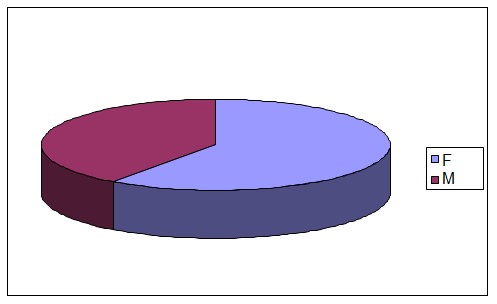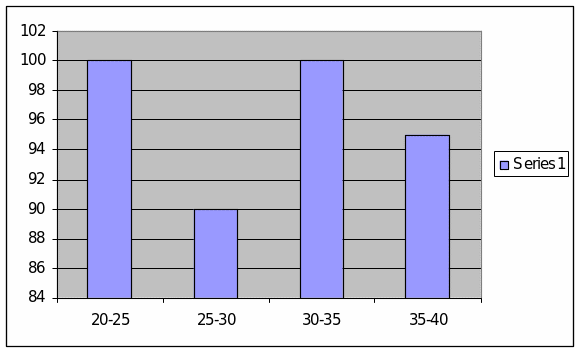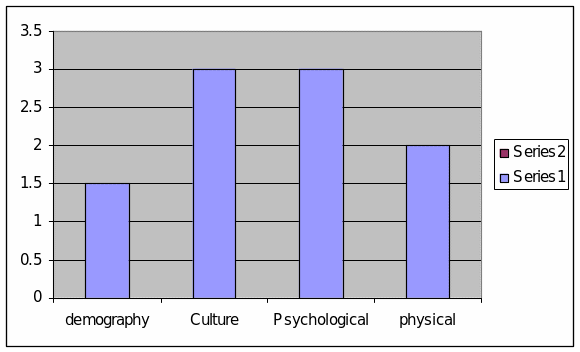Introduction
Culture and motivation for consumption are interconnected links in consumer behavior. Culture is the factor which acts as the catalyst for consumption and also the biggest motivator in deciding consumer behavior. Culture is a factor that varies from people to people in buyer decisions and in the purchase of products. Motivation begins as a response to the stimuli which rises with need identification. It is the strong desire by consumers in achieving or in getting certain products and in fulfilling his need and the urge for the product in the market.
Research Background on Motivation to Buy
Motivation is a psychological aspect, which plays a vital role in acting as the a catalyst in buyer decision process and in the buying and in the decision making process for buying.
Motivation is also a factor which arises from the recognition of the need for the product to the research conducted on the viability of the product and the understanding of the benefits and the advantages in getting the product. “Questions of motivation–what people want, how they act to achieve it, and how they cope with difficulties along the way–are among the most fundamental in psychology” (Shah & Gardner, 2007, para.1).
Motivation is a most frequently used expression of psychology. It depends on the aspect which move about or set in motion the life form. We assume the existence of motivation when there are precise targets or goals. For an illustration, a student scoring a very high grade in the examination can be through motivation factors or the constraints. “Motivating people is a myth. People cannot be motivated by others. They are motivated from within. Leaders can however, set up an environment in which people are able to motivate themselves” (Article library, 2008, para.1).
The process of commencing a deed is theoretically called ‘motivation’. Undeviating behavior towards positive goal is the core of motivation. Motivation is not constantly and openly apparent. It is contingent and used to clarify behavior. When we inquire “What motivates an individual for certain job?” We frequently mean why does she perform, are there any factors contributing for doing the work.
In other terms, motivation, as commonly used, refers to the reason or behavioral terms and methods. Fascinatingly, we are not conscious of all our purposes. Behavior can be persuaded by insensible motive also. If our perceptive of motive is accurate, we have an influential tool for explaining behavior. We give details of our daily behavior in requisites of diverse motives.
Individual behavior comes into sight to arise in reaction to some form of inside or outside inspiration. The behaviors, though are not accidental, they frequently engage some reason or objective. It is regularly apprehended that behaviors receive position as a consequence of the stimulation of convinced motives. Thus, drive can be definite as the procedure of making active, preserving and undeviating behavior against a scrupulous goal. The process is regularly ended, once the preferred goal is accomplished by an individual.
There are various theories found which contribute for the motivation. The first theory on motivation was put forward by Abraham Maslow and in the theory he states that motivation arises from the need and need can be classified in a pyramid form. Besides, the need or the priority of each step can be understood by the various kinds of the need like physiological needs, safety needs, belongings and esteemed needs, self actualization needs.
According to him the needs of the persons are the drivers of motivation and each of the needs contribute in several manner for motivation. The physiological needs of the person are the need of the physiology need like the hunger, thirst, and the day to day needs. The need of safety includes the need of security, shelter and clothing of individuals. Belonging need specifies on various kind of the possessiveness, love and the care which people need and various relationships to be exhibited by humans in the society.
The esteemed needs of the people are those needs which contribute to the esteemed needs like the need for reputation, dignity and respect from the people by other fellow beings. The self actualization needs are those needs which help a person in achieving success in different walks of life and in getting good results in the fulfillment of all his desires.
The different kind of self actualization needs of the person makes him or her become a success in different walks of life.
The culture has main importance in the motivation in people, “The Cultural Change Principal knows the difference between being an expert in a given content innovation and being an expert in managing the process of change. Instead, the Cultural Change Principal provides opportunities for people to visit sites that are using new ideas, invites questions and even dissent, and expects the change process to proceed in fits and starts during the first few months of implementation” (Fullan, 2002, para.11).
Data Collection Process
The data was collected from January 2010 to April 2010. The survey was conducted from a sample population of 350 people, where they were asked to complete a questionnaire and the time given for the completion of the questionnaire was about 15 minutes. “There are many similarities between online and postal surveys, stemming from the common methodology of self-administered questionnaires. Depending on the design, surveys can be conducted through email or they can be posted on the web and the URL provided (password is optional depending on the nature of the research) to respondents who have already been approached” (Janet, et al, 2002, para.5). Of the 300 respondents 118 were the male population and 152 consisted of the female group,
Forty percent of the sample said that they were college pass outs and ninety percent where undergraduates. The majority of almost 60% claimed to like shopping and the purchase of goods, and they consider that as the great passion.
The population vary from the age group of 20 to 40, the people with the age limit up to a difference of are to be clubbed together.
The blogging of the data is the big task, and they were done during the break time and they were done as the home work.
This section does not require research but if you did research, a citation must be included in the section. Be sure this is written in 3rd person.

Description of chart #1: Gender
The above diagram shows the representation of motivation and the purchase level of people in the study. The diagram shows gender wise population including the male and the female. The female group is said to be the majority of buying class in the market as compared to the male gender.
From the above figure it also clearly emerges that females are mostly influenced by culture and motivation than the male population in purchase decisions and in the actions.

Description of chart #2: age
The chart in the above diagram shows age wise details of the respondents. According to the table, the age wise grouping of data was done and the people within the age range from 20 to 40 was grouped. The grouping of people was done to an age difference of 5.
In the above diagram, people in the age group are shown in the x axis and the percentage of the purchase is given in the y axis. The above table shows that people in the age group of 20-25 showed a very high purchase percentage. The middle and the aged groups in the table have shown a less percentage of purchase in comparison with younger population in the group.

Description of table #3: factors
The table consists of an analysis of various factors that affect the marketing behavior of people and various market segment factors influencing the purchase decisions.
Various market segment factors of the firm are demography, culture, psychological and physical characteristics.
Demography factors are age, sex of the people etc. In the figure, it shows that the demography has less effect on purchase decisions, “Analyzing the relationship between demographic variables and workers’ behaviors and attitudes has a long tradition in industrial and organizational psychology (e.g., Schreiber, 1979). Demographic characteristics such as age, tenure, education, race, and sex have been related to outcomes such as performance (Waldman and Avolio, 1986), hiring and promotion decisions (McIntire, Moberg, and Posner, 1980), and turnover (Mobley, Horner, and Hollingsworth, 1978)” (Anne, et al, 1992, para.3).
The next factor is culture, which implies that cultural factor has a high influence on the purchase decision of the customer, and the psychological factor of the people are the effect of psychological factors like the need, quality, price had a greater effect on the purchase decisions. The physical need also had an impact but not much up to the culture and the physiological needs and the motivation.
Hypothesis Test #1
- Null and alternate hypotheses: The null hypothesis states the motivation factor is mainly depended on culture. The alternate hypothesis states that the culture has a greater effect in motivation and in the decision purchase to a product.
- The test: Run the test and paste it in the document The test of significance is 0.5, which shows the alternate hypothesis is valid and the null hypothesis is rejected.
- The decision rule: The decision deals with both the hypothesis, null hypothesis (H0) and the alternate hypothesis (H1).The decision here is to accept the alternate hypothesis and to reject the null one which leads to a type 2 error.
Hypothesis Test #2
- Null and alternate hypotheses: The null hypothesis (h0) states that motivation has not much effect on the purchase decision and the alternate hypothesis (h1) states that motivation is the main factor in the buyer decision making process.
- The test: Run the test and paste it in the document. As h0 is a one side test, the one tailed test is used and the level of the significance in the test is.5, which shows that the alternate hypothesis is appropriate and can be accepted.
- The decision rule: The decision rule states that according to the level of the significance test the alternate hypothesis is accepted and the other hypothesis is rejected.
Hypothesis Test #3
- Null and alternate hypotheses: The null hypothesis states that the gender does not have any effect on the purchase behavior, Alternate hypothesis states that the gender has an effect and the females are the main purchasers and buying decision makers.
- The test: The hypothesis stated is much useful and the test of significance proves the data to be in significant form and the acceptance of alternate hypothesis is stated to be correct.
- The decision rule: The decision rule states that the hypothesis of the alternate one is selected and gender and motivation are the main factors identified as a decisive in the buying process.
Hypothesis Test #4 – Regression
- Null and alternate hypotheses: Regression is a linear composite of the explanatory variables in such a way that the maximum correlation with the criterion variables can be achieved. This technique is an appropriate one for the research has a single, metric criterion variable which is supposed to have the function of an explanatory variable.
- The test: Run the test and paste it in the document
- The decision rule: As the test has a good level of significance, the regression coefficients are found to be much useful for the test.
Application of Findings
The regression test has resulted in the significance of 0.5, hence the figure shows good result and the test has a high significance.
Marketing Implications
Marketing produces desired results, which are much useful in manufacturing and selling of products.
The main implications of the product like the gender, factors, motivations etc should be viewed as the criteria of the study.
Conclusion
The above discussions on marketing and factors affecting the marketing of product gives vivid implications of various depended and non depended factors of the product in the market and shows how they affect the marketing of the product. It is also clear that the factors which affect the product determine how to position the same for the success of the marketing process.
Reference List
Article library. (2008). Change Factory. Web.
Fullan, M. (2002). The change leader. Centre for Development and Learning. Web.
Janet, I. et al. (2002). Online surveys in marketing research. Access My Library. Web.
Shah, J.Y. & Gardner, W. L. (2007). Motivation science: Editorial reviews. Amazon. Web.
Tsui, A S. et al. (1992). Being different: Relational demography and organizational attachment. Access My Library. Web.
